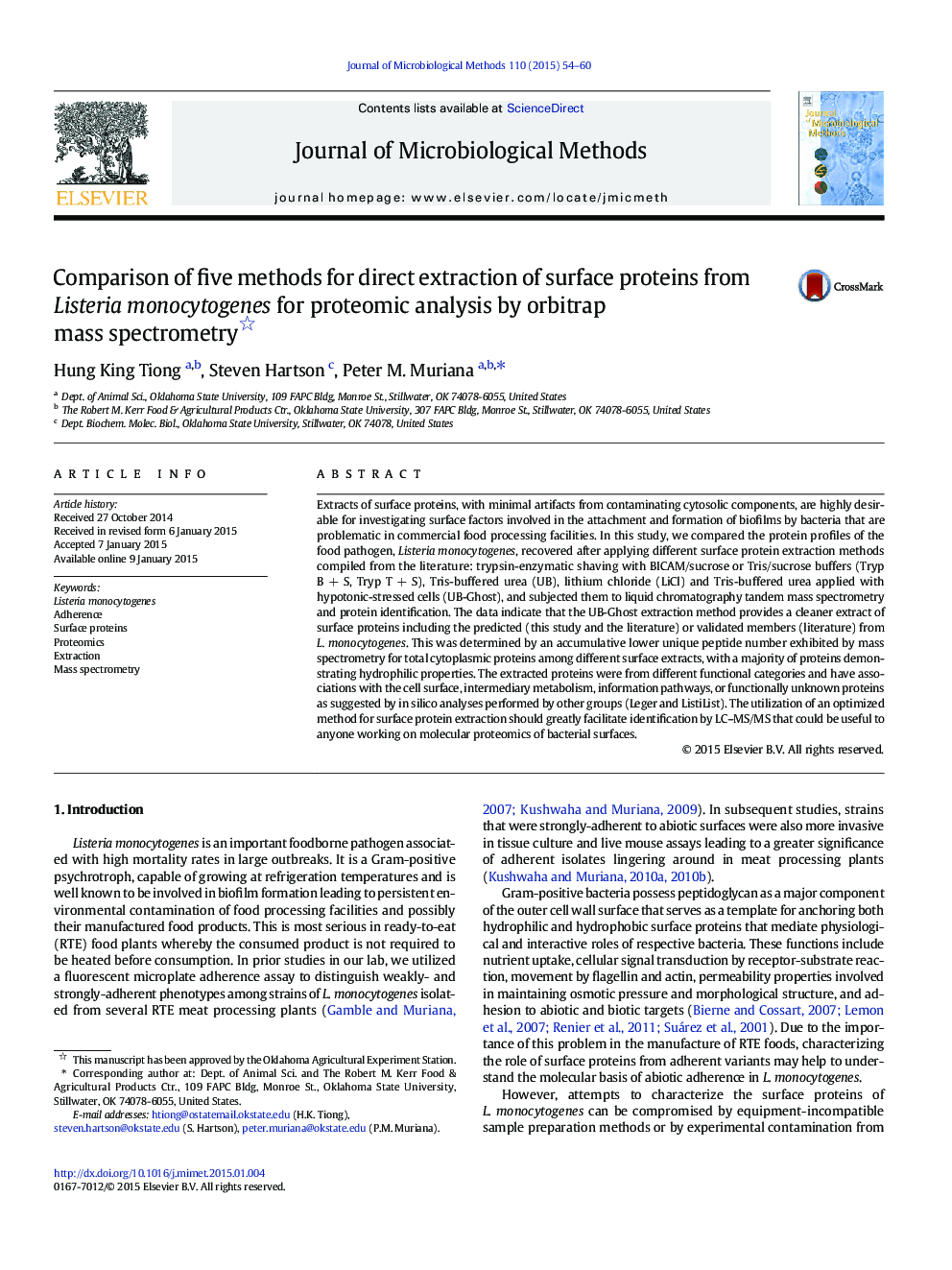| کد مقاله | کد نشریه | سال انتشار | مقاله انگلیسی | نسخه تمام متن |
|---|---|---|---|---|
| 2089836 | 1545933 | 2015 | 7 صفحه PDF | دانلود رایگان |

• We compared 5 methods for the extraction of surface proteins from L. monocytogenes.
• The UB-Ghost method was the best and the least contaminated with non-surface proteins.
• Cytosolic proteins were found in extractions from all methods.
• Proteins were identified by LC–MS/MS (Orbitrap).
Extracts of surface proteins, with minimal artifacts from contaminating cytosolic components, are highly desirable for investigating surface factors involved in the attachment and formation of biofilms by bacteria that are problematic in commercial food processing facilities. In this study, we compared the protein profiles of the food pathogen, Listeria monocytogenes, recovered after applying different surface protein extraction methods compiled from the literature: trypsin-enzymatic shaving with BICAM/sucrose or Tris/sucrose buffers (Tryp B + S, Tryp T + S), Tris-buffered urea (UB), lithium chloride (LiCl) and Tris-buffered urea applied with hypotonic-stressed cells (UB-Ghost), and subjected them to liquid chromatography tandem mass spectrometry and protein identification. The data indicate that the UB-Ghost extraction method provides a cleaner extract of surface proteins including the predicted (this study and the literature) or validated members (literature) from L. monocytogenes. This was determined by an accumulative lower unique peptide number exhibited by mass spectrometry for total cytoplasmic proteins among different surface extracts, with a majority of proteins demonstrating hydrophilic properties. The extracted proteins were from different functional categories and have associations with the cell surface, intermediary metabolism, information pathways, or functionally unknown proteins as suggested by in silico analyses performed by other groups (Leger and ListiList). The utilization of an optimized method for surface protein extraction should greatly facilitate identification by LC–MS/MS that could be useful to anyone working on molecular proteomics of bacterial surfaces.
Journal: Journal of Microbiological Methods - Volume 110, March 2015, Pages 54–60